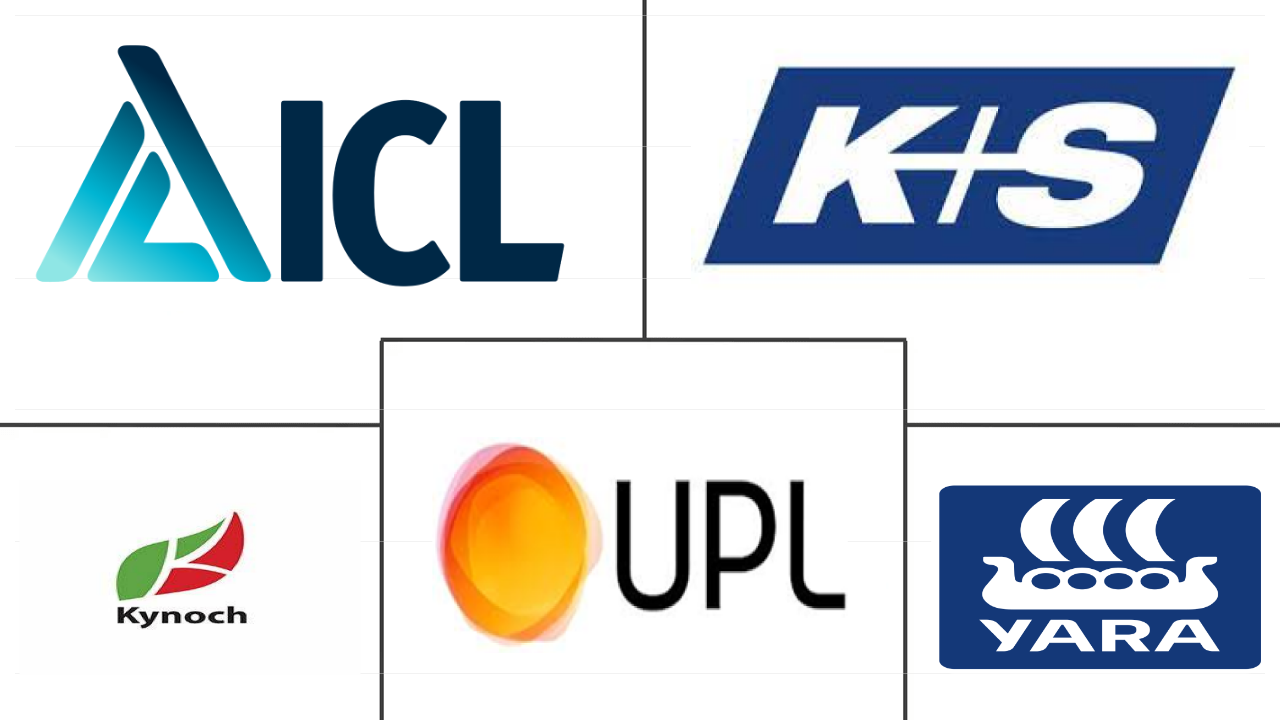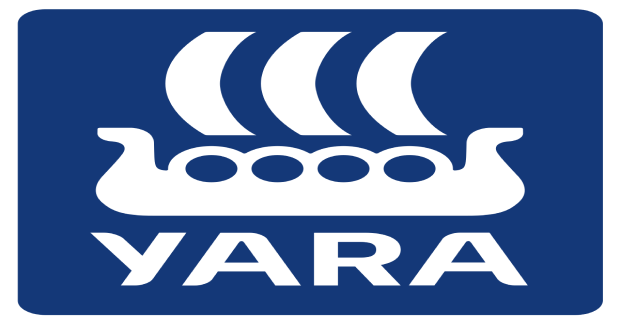Market Size of africa specialty fertilizer Industry
|
|
Study Period | 2017 - 2030 |
|
|
Market Size (2024) | USD 0.98 Billion |
|
|
Market Size (2030) | USD 1.4 Billion |
|
|
Largest Share by Speciality Type | Water Soluble |
|
|
CAGR (2024 - 2030) | 6.10 % |
|
|
Largest Share by Country | Nigeria |
Major Players |
||

|
||
|
*Disclaimer: Major Players sorted in no particular order |
Africa Specialty Fertilizer Market Analysis
The Africa Specialty Fertilizer Market size is estimated at 0.98 billion USD in 2024, and is expected to reach 1.4 billion USD by 2030, growing at a CAGR of 6.10% during the forecast period (2024-2030).
0.98 Billion
Market Size in 2024 (USD)
1.4 Billion
Market Size in 2030 (USD)
8.12 %
CAGR (2017-2023)
6.10 %
CAGR (2024-2030)
Largest segment by Speciality Type
47.42 %
value share, Water Soluble, 2023
By using water-soluble fertilizers, the amount of water and fertilizer needed to produce crops can be reduced, leading to less pollution and waterlogging in waterways.
Fastest Growing Speciality Type
6.54 %
Projected CAGR, CRF, 2024-2030
Leaching and volatilization pose significant challenges, leading to nutrient losses. Controlled-release fertilizers offer a potential 10-35% increase in fertilizer efficiency.
Largest Segment by Crop Type
6.10 %
Projected CAGR, Horticultural Crops, 2024-2030
The segment is growing faster due to rising interest in landscaping, indoor gardening, and increased demand for locally grown attractive flowers and ornamental plants.
Largest segment by Country
34.50 %
value share, Nigeria, 2023
Nigeria's agricultural sector is facing various challenges including land tenure issues, limited irrigation, and climate change will drive the specialty fertilizers market.
Leading Market Player
24.57 %
market share, Yara International ASA, 2022

Yara International has became a market leader by offering a wide range of specialty fertilizers including CRF, SRF, foliar, liquid, micronutrients and complex fertilizers
- In 2022, controlled-release fertilizers (CRFs) held a 7.4% share of the specialty fertilizer market. The steady growth of CRFs can be attributed to their distinct advantages over traditional fertilizers and the increasing awareness of efficient agricultural practices. CRFs gradually release nutrients over an extended period, ensuring a consistent nutrient supply to plants. This not only reduces nutrient wastage but also minimizes the risk of leaching or evaporation, which is common with conventional fertilizers.
- Water-soluble fertilizers, with a 47.8% market share, ranked second in the specialty fertilizer market in 2022. The use of water-soluble fertilizers has shown potential in reducing both water and fertilizer requirements for cultivating healthy plants.
- The liquid fertilizer market is poised for growth, propelled by advancements in irrigation systems and the rising adoption of advanced cultivation techniques such as hydroponics and aquaponics. The market value of liquid fertilizers is projected to witness a CAGR of 5.8% during 2023-2030.
- The adoption of slow-release fertilizers offers farmers not only economic benefits but also environmental advantages, such as water conservation, prevention of nitrogen volatilization and leaching, and reduced labor in fertilizer handling. These factors are expected to drive a 5.4% growth in the market value of slow-release fertilizers during 2023-20230.
- Given the benefits of specialty fertilizers, including precise nutrient release, reduced application rates, and economic advantages for farmers, the specialty fertilizer market is poised for growth in the coming years.
Government initiatives and farmers' focus on increasing productivity are expected to bolster the growth of the market
- In 2022, Nigeria held a commanding 27.0% value share in the African specialty fertilizer market. The country's agricultural sector, while facing challenges such as complex land tenure issues, inadequate irrigation infrastructure, the adverse effects of climate change, and the gradual adoption of cutting-edge agricultural technologies, has seen growth in the market supported by government initiatives. These include the Agriculture Promotion Policy (APP), the Nigeria-Africa Trade and Investment Promotion Programme, the National Agricultural Technology and Innovation Plan (NATIP), and the Anchor Borrowers Program (ABP), all of which have been instrumental in enhancing agricultural productivity.
- South Africa distinguishes itself as the continent's most advanced, productive, and diverse agricultural region. In 2022, its robust agricultural sector held a substantial 37.0% share of the total African specialty fertilizer market. The market is expected to record a CAGR of 6.7% during forecast period. This anticipated growth is largely due to the increasing need to mitigate the effects of climate-related risks, such as prolonged droughts and intense heat waves, by adopting more efficient fertilizer solutions.
- The African specialty fertilizer market is set to expand, driven by a rapidly growing population, the diminishing availability of arable land, the urgent necessity to improve yields on existing farmland, and concerted efforts to enhance agricultural productivity across the region. Thus, the market is forecasted to witness a CAGR of 6.0% from 2023 to 2030.
Africa Specialty Fertilizer Industry Segmentation Africa Specialty Fertilizer Industry Segmentation
CRF, Liquid Fertilizer, SRF, Water Soluble are covered as segments by Speciality Type. Fertigation, Foliar, Soil are covered as segments by Application Mode. Field Crops, Horticultural Crops, Turf & Ornamental are covered as segments by Crop Type. Nigeria, South Africa are covered as segments by Country.
- In 2022, controlled-release fertilizers (CRFs) held a 7.4% share of the specialty fertilizer market. The steady growth of CRFs can be attributed to their distinct advantages over traditional fertilizers and the increasing awareness of efficient agricultural practices. CRFs gradually release nutrients over an extended period, ensuring a consistent nutrient supply to plants. This not only reduces nutrient wastage but also minimizes the risk of leaching or evaporation, which is common with conventional fertilizers.
- Water-soluble fertilizers, with a 47.8% market share, ranked second in the specialty fertilizer market in 2022. The use of water-soluble fertilizers has shown potential in reducing both water and fertilizer requirements for cultivating healthy plants.
- The liquid fertilizer market is poised for growth, propelled by advancements in irrigation systems and the rising adoption of advanced cultivation techniques such as hydroponics and aquaponics. The market value of liquid fertilizers is projected to witness a CAGR of 5.8% during 2023-2030.
- The adoption of slow-release fertilizers offers farmers not only economic benefits but also environmental advantages, such as water conservation, prevention of nitrogen volatilization and leaching, and reduced labor in fertilizer handling. These factors are expected to drive a 5.4% growth in the market value of slow-release fertilizers during 2023-20230.
- Given the benefits of specialty fertilizers, including precise nutrient release, reduced application rates, and economic advantages for farmers, the specialty fertilizer market is poised for growth in the coming years.
| Speciality Type | |||||
| |||||
| Liquid Fertilizer | |||||
| SRF | |||||
| Water Soluble |
| Application Mode | |
| Fertigation | |
| Foliar | |
| Soil |
| Crop Type | |
| Field Crops | |
| Horticultural Crops | |
| Turf & Ornamental |
| Country | |
| Nigeria | |
| South Africa | |
| Rest of Africa |
Africa Specialty Fertilizer Market Size Summary
The African specialty fertilizer market is experiencing a dynamic transformation, driven by the increasing demand for efficient agricultural practices and the need to enhance crop yields amid challenging environmental conditions. The market is characterized by a diverse range of products, including controlled-release fertilizers, water-soluble fertilizers, and liquid fertilizers, each offering unique advantages such as reduced nutrient wastage and improved nutrient delivery. The adoption of these specialty fertilizers is supported by advancements in agricultural technologies and government initiatives aimed at boosting agricultural productivity across the continent. Countries like Nigeria and South Africa are at the forefront of this growth, leveraging their agricultural sectors' potential to address issues like climate change and food security.
As the market expands, it is also witnessing strategic movements by key players aiming to strengthen their foothold in the region. Companies such as ICL Group Ltd, K+S Aktiengesellschaft, Kynoch Fertilizer, UPL Limited, and Yara International ASA are actively engaging in mergers and acquisitions to enhance their operational capabilities and market reach. The fragmented nature of the market presents both challenges and opportunities, with major players accounting for a significant share. The ongoing efforts to improve nutrient application rates and address soil degradation issues are expected to further propel the market's growth, making specialty fertilizers a crucial component in Africa's agricultural landscape.
Africa Specialty Fertilizer Market Size - Table of Contents
-
1. MARKET SEGMENTATION (includes market size in Value in USD and Volume, Forecasts up to 2030 and analysis of growth prospects)
-
1.1 Speciality Type
-
1.1.1 CRF
-
1.1.1.1 Polymer Coated
-
1.1.1.2 Polymer-Sulfur Coated
-
1.1.1.3 Others
-
-
1.1.2 Liquid Fertilizer
-
1.1.3 SRF
-
1.1.4 Water Soluble
-
-
1.2 Application Mode
-
1.2.1 Fertigation
-
1.2.2 Foliar
-
1.2.3 Soil
-
-
1.3 Crop Type
-
1.3.1 Field Crops
-
1.3.2 Horticultural Crops
-
1.3.3 Turf & Ornamental
-
-
1.4 Country
-
1.4.1 Nigeria
-
1.4.2 South Africa
-
1.4.3 Rest of Africa
-
-
Africa Specialty Fertilizer Market Size FAQs
How big is the Africa Specialty Fertilizer Market?
The Africa Specialty Fertilizer Market size is expected to reach USD 979.36 million in 2024 and grow at a CAGR of 6.10% to reach USD 1.40 billion by 2030.
What is the current Africa Specialty Fertilizer Market size?
In 2024, the Africa Specialty Fertilizer Market size is expected to reach USD 979.36 million.

